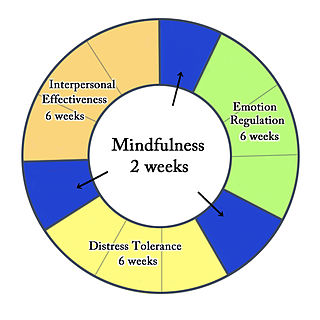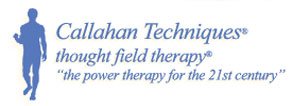Related Research Articles

Psychoanalysis is a set of theories and therapeutic techniques related to the study of the unconscious mind, which together form a method of treatment for mental disorders. The discipline was established in the early 1890s by Austrian neurologist Sigmund Freud, who retained the term psychoanalysis for his own school of thought, and stemmed partly from the clinical work of Josef Breuer and others. Psychoanalysis was later developed in different directions, mostly by students of Freud, such as Alfred Adler and his collaborator, Carl Gustav Jung, as well as by neo-Freudian thinkers, such as Erich Fromm, Karen Horney, and Harry Stack Sullivan.

Acupressure is an alternative medicine technique similar in principle to acupuncture. It is based on the concept of life energy which flows through "meridians" in the body. In treatment, physical pressure is applied to acupuncture points with the aim of clearing blockages in these meridians. Pressure may be applied by hand, by elbow, or with various devices.
Psychology is an academic and applied discipline involving the scientific study of human mental functions and behavior. Occasionally, in addition or opposition to employing the scientific method, it also relies on symbolic interpretation and critical analysis, although these traditions have tended to be less pronounced than in other social sciences, such as sociology. Psychologists study phenomena such as perception, cognition, emotion, personality, behavior, and interpersonal relationships. Some, especially depth psychologists, also study the unconscious mind.

Dialectical behavior therapy (DBT) is an evidence-based psychotherapy that began with efforts to treat borderline personality disorder. There is evidence that DBT can be useful in treating mood disorders, suicidal ideation, and for change in behavioral patterns such as self-harm, and substance abuse. DBT evolved into a process in which the therapist and client work with acceptance and change-oriented strategies, and ultimately balance and synthesize them, in a manner comparable to the philosophical dialectical process of hypothesis and antithesis, followed by synthesis.
The term repressed memories refers to the rare psychological phenomenon in which memories of traumatic events may be stored in the unconscious mind and blocked from normal conscious recall. As originally postulated by Sigmund Freud, repressed memory theory claims that although an individual may be unable to recall the memory, it may still affect the individual through subconscious influences on behavior and emotional responding.

Emotional Freedom Techniques (EFT) is a form of counseling intervention that draws on various theories of alternative medicine including acupuncture, neuro-linguistic programming, energy medicine, and Thought Field Therapy (TFT). It is best known through Gary Craig's EFT Handbook, published in the late 1990s, and related books and workshops by a variety of teachers. EFT and similar techniques are often discussed under the umbrella term "energy psychology".
Cognitive restructuring (CR) is a psychotherapeutic process of learning to identify and dispute irrational or maladaptive thoughts known as cognitive distortions, such as all-or-nothing thinking (splitting), magical thinking, over-generalization, magnification, and emotional reasoning, which are commonly associated with many mental health disorders. CR employs many strategies, such as Socratic questioning, thought recording, and guided imagery, and is used in many types of therapies, including cognitive behavioral therapy (CBT) and rational emotive behaviour therapy (REBT). A number of studies demonstrate considerable efficacy in using CR-based therapies.
Eye movement desensitization and reprocessing (EMDR) is a form of psychotherapy developed by Francine Shapiro starting in 1988 in which the person being treated is asked to recall distressing images; the therapist then directs the patient in one type of bilateral stimulation, such as side-to-side eye movements or hand tapping. According to the 2013 World Health Organization practice guideline: "This therapy [EMDR] is based on the idea that negative thoughts, feelings and behaviours are the result of unprocessed memories. The treatment involves standardized procedures that include focusing simultaneously on (a) spontaneous associations of traumatic images, thoughts, emotions and bodily sensations and (b) bilateral stimulation that is most commonly in the form of repeated eye movements."
Psychodynamic psychotherapy or psychoanalytic psychotherapy is a form of depth psychology, the primary focus of which is to reveal the unconscious content of a client's psyche in an effort to alleviate psychic tension.
Biological psychiatry or biopsychiatry is an approach to psychiatry that aims to understand mental disorder in terms of the biological function of the nervous system. It is interdisciplinary in its approach and draws on sciences such as neuroscience, psychopharmacology, biochemistry, genetics, epigenetics and physiology to investigate the biological bases of behavior and psychopathology. Biopsychiatry is that branch of medicine which deals with the study of the biological function of the nervous system in mental disorders.

Thought Field Therapy (TFT) is a fringe psychological treatment developed by an American psychologist, Roger Callahan. Its proponents say that it can heal a variety of mental and physical ailments through specialized "tapping" with the fingers at meridian points on the upper body and hands. The theory behind TFT is a mixture of concepts "derived from a variety of sources. Foremost among these is the ancient Chinese philosophy of chi, which is thought to be the 'life force' that flows throughout the body". Callahan also bases his theory upon applied kinesiology and physics. There is no scientific evidence that TFT is effective, and the American Psychological Association has stated that it "lacks a scientific basis" and consists of pseudoscience.
Nambudripad's Allergy Elimination Techniques (NAET) is a form of alternative medicine which proponents claim can treat allergies and related disorders. The techniques were devised by Devi Nambudripad, a California-based chiropractor and acupuncturist, in 1983, drawing on a combination of ideas from applied kinesiology, acupuncture, acupressure, nutritional management, and chiropractic methods.
Energy medicine is a branch of alternative medicine based on a pseudo-scientific belief that healers can channel healing energy into a patient and effect positive results. Practitioners use a number of names including various synonyms for medicine and sometimes use the word vibrational instead of or in concert with energy. In no case is any empirically measurable energy involved: the term refers instead to so-called subtle energy.

The following outline is provided as an overview of and topical guide to thought (thinking):

Radionics—also called electromagnetic therapy (EMT) and the Abrams Method—is a form of alternative medicine that claims that disease can be diagnosed and treated by applying electromagnetic radiation (EMR), such as radio waves, to the body from an electrically powered device. It is similar to magnet therapy, which also applies EMR to the body but uses a magnet that generates a static electromagnetic field.

Colorpuncture, cromopuncture, or color light acupuncture, is a pseudoscientific alternative medicine practice based on "mystical or supernatural" beliefs which asserts that colored lights can be used to stimulate acupuncture points to promote healing and better health. It is a form of chromotherapy or color therapy. There is no known anatomical or histological basis for the existence of acupuncture points or meridians, and there is no scientific support for the efficacy of colorpuncture.
Cognitive processing therapy (CPT) is a manualized therapy used by clinicians to help people recover from posttraumatic stress disorder (PTSD) and related conditions. It includes elements of cognitive behavioral therapy (CBT) treatments. A typical 12-session run of CPT has proven effective in treating PTSD across a variety of populations, including combat veterans, sexual assault victims, and refugees. CPT can be provided in individual and group treatment formats.
Post-traumatic stress disorder (PTSD) is a psychiatric disorder that can develop in certain individuals after exposure to traumatic events, such as combat and sexual assault. PTSD is commonly treated with various types of psychotherapy and pharmacotherapy.
Psychosensory therapy is a form of therapeutic treatment that uses sensory stimuli to affect psychological and emotional health. In addition, psychosensory therapy is a group of therapeutic techniques that involves applying sensory inputs to treat various behaviors, mood, thoughts, symptoms, and pain. Psychosensory therapy has its roots in traditional Chinese medicine in addition to energy psychology. Some important figures in psychosensory therapy include chiropractor George Goodheart, psychiatrist John Diamond, clinical psychologist Roger Callahan, and Ronald Ruden.
References
- ↑ The 'National Center for Complementary and Integrative Health (October 13, 2006). "Energy Medicine Overview".
- 1 2 3 Grant J. Devilly (2005). "Power Therapies and possible threats to the science of psychology and psychiatry". Australian and New Zealand Journal of Psychiatry. 39 (6): 437–445. doi:10.1080/j.1440-1614.2005.01601.x. PMID 15943644.
- ↑ AR Pratkins. "How to sell a pseudoscience". Archived from the original on 2006-12-11.
- ↑ McCaslin DL (June 2009). "A review of efficacy claims in energy psychology". Psychotherapy. 46 (2): 249–56. doi:10.1037/a0016025. PMID 22122622.